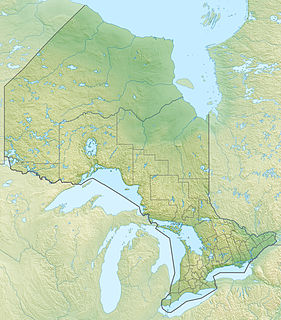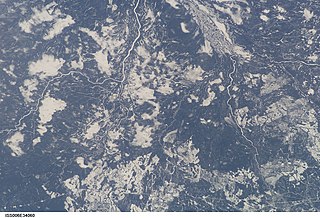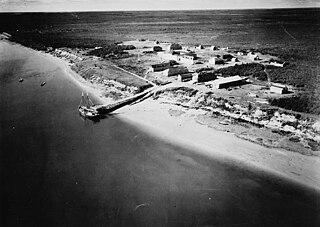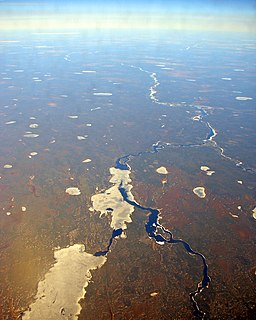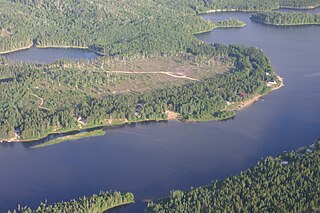| Sachigo River | |
| Country | Canada |
|---|---|
| Province | Ontario |
| Region | Northwestern Ontario |
| District | Kenora |
| Part of | Hudson Bay drainage basin |
| Tributaries | |
| - left | Beaver Stone River,Thorne River,Sherman River |
| - right | Wapaseese River, Morrison River,Rottenfish River |
| Source | Broadside Lake |
| - elevation | 272 m (892 ft) |
| - coordinates | 53°37′10″N92°38′19″W / 53.61944°N 92.63861°W |
| Mouth | Severn River |
| - elevation | 75 m (246 ft) |
| - coordinates | 55°04′33″N88°59′02″W / 55.07583°N 88.98389°W Coordinates: 55°04′33″N88°59′02″W / 55.07583°N 88.98389°W |
| Length | 380 km (236 mi) |
| Discharge | for Sachigo River below Beaverstone River [1] |
| - average | 144.25 m3/s (5,094 cu ft/s) |
| - max | 191.53 m3/s (6,764 cu ft/s) |
| - min | 104.70 m3/s (3,697 cu ft/s) |
The Sachigo River is a river in the Hudson Bay drainage basin in Kenora District in Northwestern Ontario, Canada. It is a tributary of the Severn River.

A river is a natural flowing watercourse, usually freshwater, flowing towards an ocean, sea, lake or another river. In some cases a river flows into the ground and becomes dry at the end of its course without reaching another body of water. Small rivers can be referred to using names such as stream, creek, brook, rivulet, and rill. There are no official definitions for the generic term river as applied to geographic features, although in some countries or communities a stream is defined by its size. Many names for small rivers are specific to geographic location; examples are "run" in some parts of the United States, "burn" in Scotland and northeast England, and "beck" in northern England. Sometimes a river is defined as being larger than a creek, but not always: the language is vague.
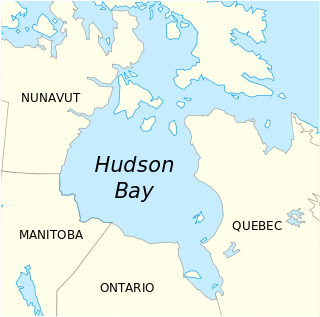
Hudson Bay is a large body of saltwater in northeastern Canada with a surface area of 1,230,000 km2 (470,000 sq mi). It drains a very large area, about 3,861,400 km2 (1,490,900 sq mi), that includes parts of southeastern Nunavut, Saskatchewan, most of Manitoba, Ontario, Quebec and indirectly through smaller passages of water to parts of North Dakota, South Dakota, Minnesota, and Montana. Hudson Bay's southern arm is called James Bay.

A drainage basin is any area of land where precipitation collects and drains off into a common outlet, such as into a river, bay, or other body of water. The drainage basin includes all the surface water from rain runoff, snowmelt, and nearby streams that run downslope towards the shared outlet, as well as the groundwater underneath the earth's surface. Drainage basins connect into other drainage basins at lower elevations in a hierarchical pattern, with smaller sub-drainage basins, which in turn drain into another common outlet.

